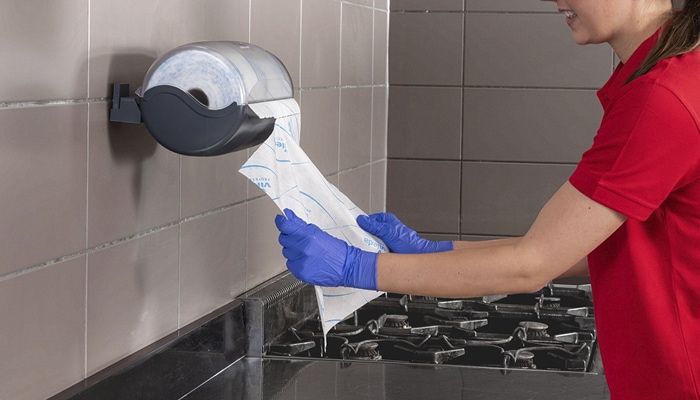
Which cleaning method is hygienically right for you?
Experience from cleaning Healthcare sites shows significant improvements in hygiene can be achieve by implementing the correct cleaning method (e.g. pre-prepared one mop/cloth per room area).Understanding the risk level of your site is a starting point:
- Higher Risk: Hotels, Bars, Restaurants, Gyms, Airports. Large turnover of visitors, often from multiple countries and visit even if unwell.
- Medium Risk: Education, Offices. Lower number of visitors, semi-public and therefore easier to control
Method |
Process |
Hygiene Level |
| Bucket / Bucket & Press |
|
|
| Spray |
|
|
|
Pre- Prepared, washable |
|
|
|
Single Use |
|
|







